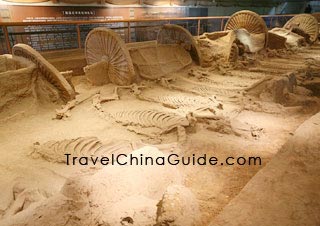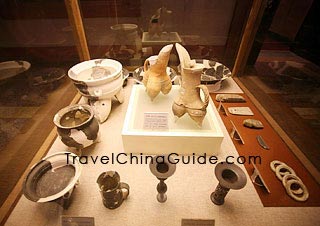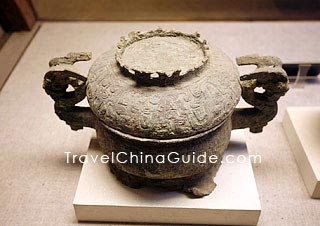Zibo Travel Guide
Zibo Facts
Chinese Name: 淄博 (zī bó)
Population: 4,702,000
Area: 5,965 square kilometers (2,303 square miles)
Location: in the central area of Shandong Province, east China
Administrative Division: 5 districts (Zhangdian, Zichuan, Boshan, Linzi, Zhoucun); 3 counties (Huantai, Gaoqin, Yiyuan)
Area Code: 0533
Zip Code: 255000
GDP (2019): CNY 364.24 billion (USD 52.796 billion)
The Designated Birthplace of Ancient Soccer by FIFA
Zibo is in the center of Shandong Province, neighboring Taishan Mountain in the south and backing the Yellow River to the north. It is also bordered by hot coastal tourist cities, Qingdao, Yantai, and Weihai to the east, and the capital city of the province, Jinan to the west. With a long history and culture, Zibo used to be the political center of Shandong Province for nearly 2,000 years and once served as the capital of Qi State in the Spring and Autumn Period (770 - 476 BC). Because of the earliest rise of Cuju (a kick-ball game) in Qi State, Zibo was recognized as the origin of world football by FIFA. A large number of exquisite cultural relics were also unearthed, most of which were displayed in Zibo Museum.
Zibo is rich in tourism resources. In the south, there are many forest parks and spectacular caves. You can visit ancient buildings of the Ming and Qing Dynasties (1368 - 1912) and time-honored shops in Zhoucun Ancient Commercial City as well as appreciate fine ceramics in the Chinese Ceramic Museum.![]() Pictures
Pictures
Zibo Attractions - Things to Do
 Yuanshan National Forest Park
Yuanshan National Forest Park
Located in the southwest of Boshan District, Yuanshan National Forest Park is made up of Phoenix Mountain, Yuwang Mountain, Wanglu Mountain, Xuejiading and Jiagutai Scenic Resorts. The undulating mountains present fabulous views which makes visitors feel totally refreshed.
Of the five scenic resorts, Phoenix Mountain is the most famous due to its beautiful scenery and rich human landscapes. The shape of the mountain is like a phoenix, hence the name. It is a natural botanical garden with over 600 kinds of herbaceous plants and 120 kinds of woody plants growing abundantly in it. It presents different aspects in each of the four seasons. A variety of flowers clothe the mountain in a mass of color. The sea of stones formed by the Karst landscape is a wonder in northern China. Moreover, the mountain has many famous historic relics such as the Qi Great Wall, Yuhuang (Jade Emperor) Palace in Song Dynasty (960-1279), and Luzu Temple in Qing Dynasty (1644-1911) hidden in the thick forest. It is said that the source of the legend Meng Jiangnu's Bitter Weeping is from this mountain. The remains of blockhouses built during the anti-Japanese War takes people's minds back to the war years.
There are almost 100 pieces of equipment for activity and amusement, satisfying tourists' desire to have fun. You can admire the residences of minority groups and enjoy their singing and dancing performance in the folk-custom garden. Along with the provision of recreational facilities and activities, Yuanshan National Forest Park is becoming an eco-tourism center in Shandong Province, bringing you back to nature.
| Entrance Fee: | CNY 50 |
|
|
 Yiyuan Karst Cave
Yiyuan Karst Cave
Located in the south of Lushan Mountain about seven miles northwest to Yiyuan County, Yiyuan Karst Cave is the largest in scale in northern China. There are more than 40 karst caves overlapping each other to form a fairy-tale world. But ages ago it was the world of ape-men, where they lived and multiplied, with evidence of fossils of their skulls and teeth and stoneware as proof.
 |
| Chinese Ancient Chariots Museum |
Jiutian Cave is in the center of the Yiyuan Karst Cave. Its name literally means Nine Caves, as it has nine branch caves linking with each other, extending the Jiutian Cave to over 547 yards in length, averaging 11 yards wide and 26 feet high. In this fantastic world, every fine prospect you see is made of stone and created by nature. On seeing the lifelike stalagmites, stalactites, curtains and columns, you cannot help but admire the exquisite craftsmanship and boundless imagination of nature.
| Entrance Fee: | CNY 50 |
Qianren Cave, 'Thousand People Cave' in English, gets its name because of its great size. 23 lifelike Buddhist statues sit there, and three bas-relief groups also tell stories from Buddhism. Shilong Cave, literally translated as 'Stone Dragon Cave', is so named due to the several dragon-shaped stones inside the cave.
| Entrance Fee: | CNY 35 |
Remember to visit Yiyuan Karst Cave when you are on your tour of Shandong. A colorful world of stone awaits you.![]() Museums & Other Scenic Spots: Linzi Museum of Ancient Chariots, Museum of the History of the State of Qi, the City Museum, Zibo Museum of Ceramics, Qiaoqianling Scenic Area, Yiyuan Karst Caves, Lushan Forest Park
Museums & Other Scenic Spots: Linzi Museum of Ancient Chariots, Museum of the History of the State of Qi, the City Museum, Zibo Museum of Ceramics, Qiaoqianling Scenic Area, Yiyuan Karst Caves, Lushan Forest Park
How to Get to Zibo
1. It is a 90 minutes' drive from Jinan Yaoqiang International Airport to the city center. The airport bus is available in front of the Zibo Rose Hotel near the railway station. There are eight buses daily, which make airport runs between 05:20 to 17:00. Jinan Yaoqiang Airport has also recently begun construction of the Luzhong Passenger Terminal in the city which is located on the first floor of the Guomao Mansion in northern Liuquan Lu (Zhangdian District). This terminal is expected to be operational in the near future.
2. The city's long-distance bus station is located at 22, Xingyuan Xi Lu, Zhangdian District. Buses to Tai'an, (where Mt. Tai is located) depart every 30 minutes.
3. Trains provide the most convenient and inexpensive mode of transportation to Zibo. As a stop along Beijing - Shanghai High Speed Railway, passengers can conveniently get here by high speed train. Besides, about 15 trains run to and from Mt. Tai, making stops in Zibo. The journey to Mt. Tai takes about two hours, with tickets running between CNY14 and CNY87.![]() See Zibo Railway Station, Zibo North Railway Station, Linzi North Railway Station
See Zibo Railway Station, Zibo North Railway Station, Linzi North Railway Station![]() Major Rail Lines from Zibo to
Major Rail Lines from Zibo to
Weather
The city is located in a warm, temperate zone, and bears a semi-humid and semi-dry continental climate. January and July are respectively the coldest and hottest month during a year. Like other major cities in North China, Zibo weather has four distinct seasons with an annual average temperature of 12![]() C-13
C-13![]() C (53.6
C (53.6 ![]() F-55.4
F-55.4 ![]() F). Spring, summer, and autumn are the best months to visit the city.
F). Spring, summer, and autumn are the best months to visit the city.
Zibo Travel Tips
![]() History: Zibo was the capital city of Qi Kingdom, one of the five powers in the Spring and Autumn Period (770BC-476BC). The city was the birthplace of Cuju, a game regarded as the origin of ancient football (the FIFA recognizes the city as football's place of origin). The city was given the name Zibo in the early 1920s, for the exploitation of coal mines in Zichuan and Boshan. The city is now a vital communication hub of Shandong.
History: Zibo was the capital city of Qi Kingdom, one of the five powers in the Spring and Autumn Period (770BC-476BC). The city was the birthplace of Cuju, a game regarded as the origin of ancient football (the FIFA recognizes the city as football's place of origin). The city was given the name Zibo in the early 1920s, for the exploitation of coal mines in Zichuan and Boshan. The city is now a vital communication hub of Shandong.
Foods: Apple, Jinsi (Golden threads) duck eggs

